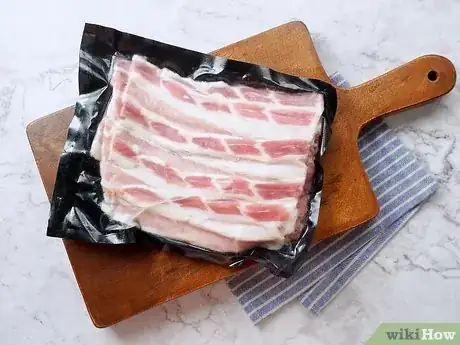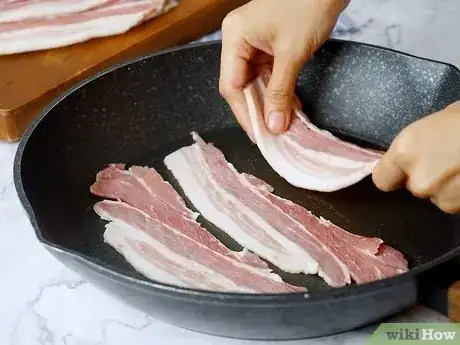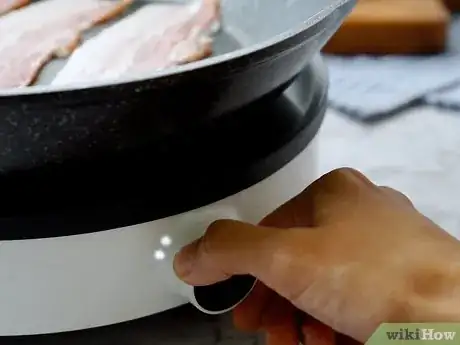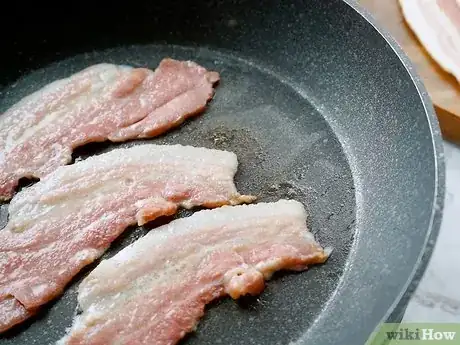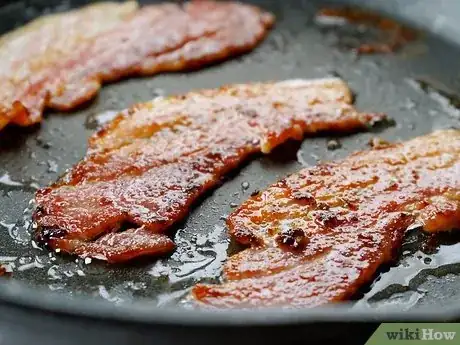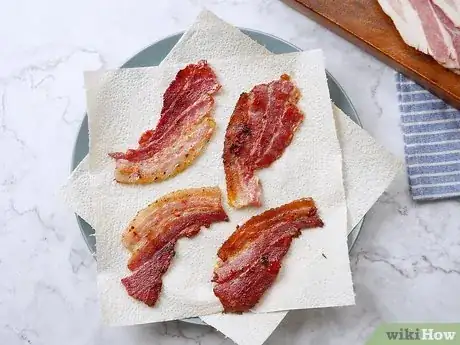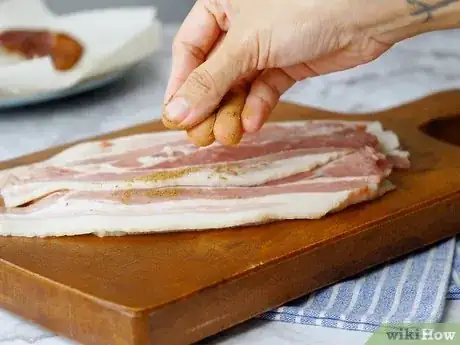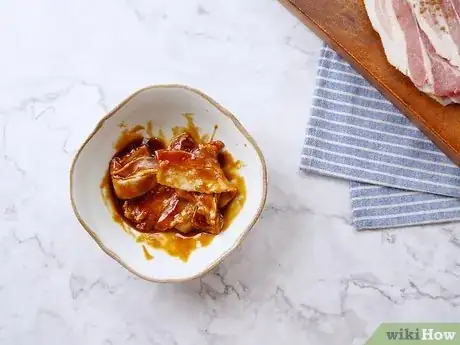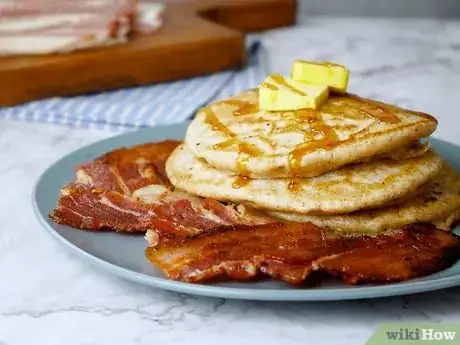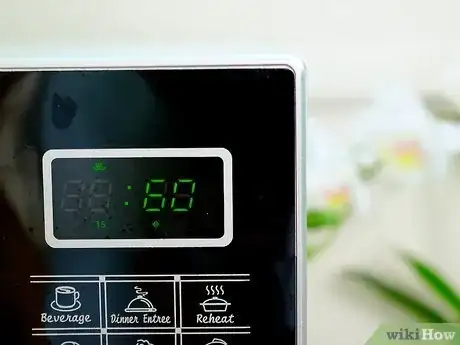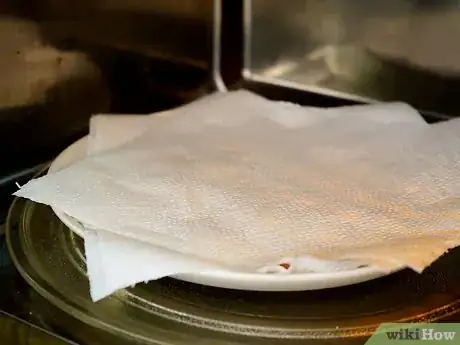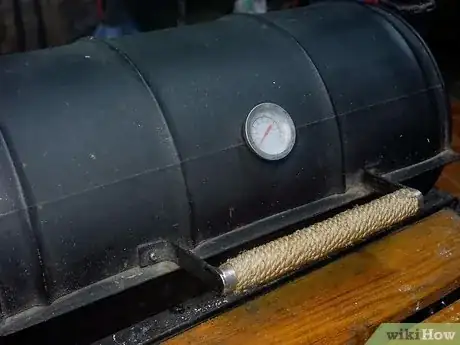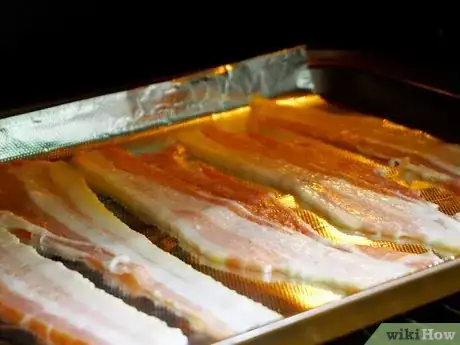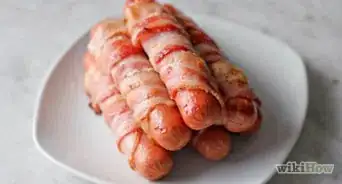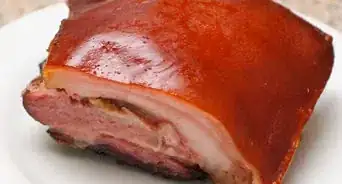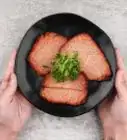This article was co-authored by Markeicha Dulaney. Chef Markeicha Dulaney is a Personal Chef and Founder of Sweet Monáe Personal Chef Services in 2015 in South Florida. She has over 22 years of experience in the kitchen and provides customizable menus to meet the dietary needs, taste preferences, style, and budget of each client. She also specializes in weekly in-home chef services, all-inclusive pro-chef services, boutique catering, and pantry organizing services. She was featured in The Knot's "Table for Two" YouTube episodes and has also been featured in Real Simple Magazine article on "What routines save you the most time.” Chef Markeicha Dulaney graduated with an Associate's Degree from the Pennsylvania Culinary Institute of Culinary Arts and is a longtime member of the USPCA (United States Personal Chef Association).
There are 12 references cited in this article, which can be found at the bottom of the page.
wikiHow marks an article as reader-approved once it receives enough positive feedback. In this case, 100% of readers who voted found the article helpful, earning it our reader-approved status.
This article has been viewed 544,534 times.
Bacon can be prepared in many different ways, but frying bacon is the traditional method. You can eat bacon with eggs, pancakes, and other breakfast foods. You can even crumble it up and add it to salads. If you don't have access to a stove and a skillet or frying pan, don't worry, there are alternatives!
Steps
Frying the Bacon
-
1Use room temperature bacon. Take the bacon out of the refrigerator and let it sit for 5 minutes. This softens the fat in the bacon. Do not fry cold bacon.[1] If you wish, you can marinate or season your bacon at this point. To get ideas for marinades and seasoning, refer to the section in this article on adding flavor to bacon.
- If the bacon is frozen, you will need to thaw it first. Don't fry frozen bacon. Instead, allow the bacon to thaw on its own while it's still in the package, or in a bowl of room-temperature water. Do not microwave the bacon to thaw it.
- If you in a rush, rinse bacon under cold running water before allowing it to thaw.
-
2Place the bacon on a cold skillet or frying pan. You can use a 12 in (30 cm) cast-iron skillet or frying pan, so long as it is cold. Place several slices of bacon on the skillet or pan. The bacon slices should be almost touching, but not overlapping. If you overlap the bacon, it may not cook evenly.[2]
- A regular frying pan will work just as well as a cast iron-skillet will, but a cast-iron skillet will cook the bacon faster.
Advertisement -
3Turn the stove on and start frying the bacon. Set the temperature to "low," and let the bacon start cooking. As the bacon begins to heat up, you will notice bacon fat pooling in the bottom of the pan. This helps cook the bacon evenly. If there is too much bacon fat, then you can consider pouring some out into a heat-safe bowl or jar. Do not pour bacon fat down the drain, or you may risk clogging the drain.[3]
- If you want crispy bacon, consider filling the skillet or frying pan with just enough water to cover the bacon. Set the temperature to "high" instead of "low." When the water begins to boil, lower the heat to "medium," and when the water has simmered away, lower the heat again to "medium low." Continue cooking the bacon in its fat until it is golden-brown in color.[4]
-
4When bacon beings to curl, flip it with a fork. After a few minutes, you will notice that the bacon is starting to bubble and curl. Flip the bacon using a fork. You can either use the fork as a mini spatula and slide it beneath the bacon slice before flipping it over. You can also wedge the bacon slice between the fork prongs and flip it over that way; this gives you more support and control.
-
5Continue cooking the bacon until it is done. The amount of time you cook your bacon depends on how well-done you like your bacon. The crispier you like your bacon, the longer you will have to cook it.
-
6Remove the bacon from the skillet or pan and drain the fat. Once the bacon has cooked to your liking, transfer each piece to a paper towel-covered plate. Allow the paper towel to soak up any excess fat before serving the bacon.
- You can also drain the bacon on sheets of newspaper, cut up paper bags, or a wire baking rack placed over a cookie sheet.
Adding Flavor to the Bacon
-
1Consider adding some variation to your bacon. You can make your bacon more flavorful by marinating it or rubbing spices onto it before frying it. You can also combine it with other food items. This section will give you some ideas on how to add extra flavor to your bacon. To learn how to fry bacon, refer to the section in this article on frying bacon.
-
2Add some spices to the bacon. You can give your bacon an extra burst of flavor by rubbing a combination of spices onto it. Make sure that the bacon is room temperature before adding the spices. Let the spices sit on the bacon for a few minutes before frying it.[5] Here are some combinations:
-
3Marinate the bacon with sauce, salad dressing, or syrup. Put some bacon in a dish and cover it with a sauce, salad dressing, or syrup of your choosing. Make sure that both sides of the bacon are coated. Let the bowl sit in the fridge for 30 minutes, then fry as usual. Consider marinating the bacon with any of the following:[10]
- 1 cup pineapple juice plus 1 teaspoon soy sauce
- Italian salad dressing
- Molasses
- Teriyaki sauce
- Maple syrup. Thinner, Vermont-style maple syrup works best.[11]
- Note that sweet sauces and dressings will caramelize when you fry the bacon. This will result in some stickiness and messiness.
-
4Make some bacon pancakes. While not quite seasoning or marinating, it is possible to combine the two best breakfast foods: bacon and pancakes. Prepare some pancake batter and fry some bacon. Take the bacon out of the skillet or frying pan, set it on some paper towels, and pour out the grease.[12] Place the bacon back onto the skillet or pan, leaving 2 inches (5.1 cm) of space between each slice. Pour the batter along each slice of bacon and let it cook until the batter starts to turn bubbly (about 1 to 2 minutes). Flip the bacon pancake over, and let it cook until the bottom turns golden (about 2 minutes).[13]
Using Alternatives to Frying
-
1Consider other cooking methods. While bacon is traditionally fried, sometimes frying just isn't an option either due to time constraints or lack of equipment. Fortunately, there are different methods of cooking bacon. This section will show you how to cook bacon using a microwave, an oven, and a grill.
-
2Cook the bacon in a microwave. Place a few strips of bacon on a paper towel-covered plate, then cover the bacon with another sheet of paper towel. Place the plate in the microwave and cook it for 1 minute. Be sure to watch your bacon, as every microwave is different and your bacon may be finished sooner.[14]
- The more paper towers you cover the plate with, the more fat the paper will soak up. This will give you crispier bacon.
-
3Cook the bacon over a grill. Start up your grill and set it to medium heat. When the grill is hot, arrange the bacon on the rack. Wait until the bacon starts to turn crispy and golden, then flip it over and let it cook some more. This will take 5 to 7 minutes.[15]
-
4Bake bacon in the oven. Cover a baking sheet with foil and place a wire rack over it. Arrange the bacon on the wire rack and place everything into a cold oven. Turn the oven on and set the temperature to 400°F (205°C). Let the bacon cook for about 20 minutes. For crisper bacon, increase the baking time by a few more minutes.[16]
- Consider flipping your bacon. Bake the bacon for 12 to 15 minutes, then flip it over. Let it cook for 10 more minutes.[17]
- Placing the bacon on a wire rack will allow the excess fat to drip down and not puddle around the bacon. It will allow the hot air in the oven to circulate around the bacon and cook it evenly.
- Placing the bacon in a cold, oven, without preheating it first, gives you flatter bacon and prevents shrinking.
Community Q&A
-
QuestionDo you need oil to fry bacon?
 Community AnswerNo, because bacon already has fat in it. Even lean cuts of bacon have enough fat with which to lubricate the pan and keep it from sticking.
Community AnswerNo, because bacon already has fat in it. Even lean cuts of bacon have enough fat with which to lubricate the pan and keep it from sticking. -
QuestionHow long do you cook bacon in a frying pan?
 Community AnswerIt will take about 5 minutes for the bacon to cook, depending on how thick it is and how crispy you like it. Be sure to flip the bacon every couple of minutes, however!
Community AnswerIt will take about 5 minutes for the bacon to cook, depending on how thick it is and how crispy you like it. Be sure to flip the bacon every couple of minutes, however! -
QuestionCan you use butter to cook bacon?
 Community AnswerNo, because the bacon already has some fat in it, which will help grease the pan. Not to mention, you need to start bacon in a cold pan; if you add butter to it, it won't melt fast enough.
Community AnswerNo, because the bacon already has some fat in it, which will help grease the pan. Not to mention, you need to start bacon in a cold pan; if you add butter to it, it won't melt fast enough.
Warnings
- Never allow bacon to cook unattended. You can start a fire, burn your house, or more importantly, burn your bacon.⧼thumbs_response⧽
- Popping and sizzling grease is normal—as is droplets of hot grease flying out of the pan. Use caution when frying the bacon so that the grease doesn't accidentally land on you and burn you.⧼thumbs_response⧽
- Try not to cook bacon on full heat if you can avoid it. Cooking slow helps bring out the fat and improves the flavor.⧼thumbs_response⧽
Things You'll Need
- Bacon
- 12 in (30 cm) cast iron skillet or frying pan
- Fork.
- Paper towels, newspaper, or cut up paper bags
References
- ↑ Huffington Post, How to Cook Bacon: Thee Ways to Achieve Perfection
- ↑ The Kitchn, How to Cook Bacon on the Stovetop
- ↑ Love to Know, How to Cook Bacon
- ↑ Lifehacker.com, Fry Perfect, Crispy Bacon Every Time By Adding Water
- ↑ Art of Manliness, Mastering Man Food: How to Cook Bacon Properly
- ↑ Love to Know, How to Cook Bacon
- ↑ Love to Know, How to Cook Bacon
- ↑ AllRecipes.com, Bill's Fried Bacon
- ↑ Love to Know, How to Cook Bacon
- ↑ Love to Know, How to Cook Bacon
- ↑ Art of Manliness, Mastering Man Food: How to Cook Bacon Properly
- ↑ MrBreakfast.com, Bacon Strip Pancakes
- ↑ Martha Stewart, Bacon Pancakes
- ↑ LifeHack.org, How to Cook Bacon Perfectly like a Chef
- ↑ Chatelaine, 4 Ways to Cook Bacon
- ↑ Cooking Light, How to Cook Bacon in the Oven
- ↑ Macheesmo, The Best Way to Cook Bacon
- ↑ Love to Know, How to Cook Bacon
About This Article
To fry bacon to perfection, take it out of your fridge and let it warm up to room temperature. Put the bacon in a cold skillet or frying pan, then put the pan on the stove over low heat. Once you notice the bacon starting to curl, flip it over with a fork or tongs. Keep cooking the bacon until it is as crispy as you like it. When it’s done, transfer the bacon to a plate lined with paper towels to soak up the excess grease. Dispose of the bacon fat in the pan by pouring it into a heat-safe jar and throwing it in the garbage. To learn how to season your bacon with spices or sauces, scroll down!
